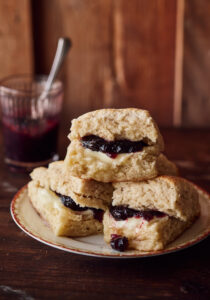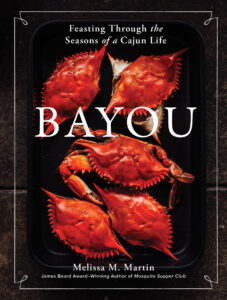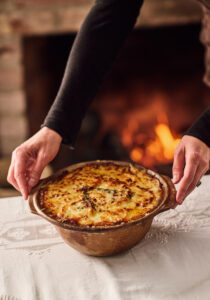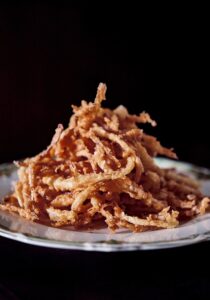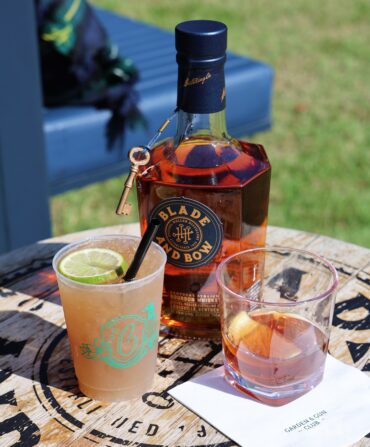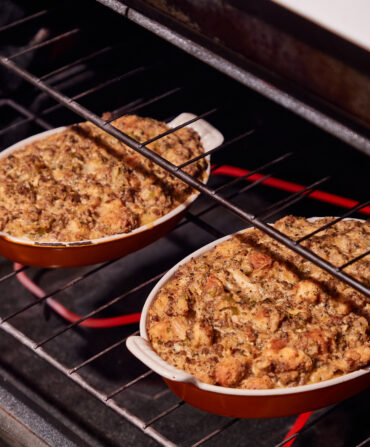The New Orleans chef Melissa M. Martin knows something about living with the seasons—not just the four major ones but Carnival season, crawfish season, hurricane season, and other hallmarks of the Cajun calendar. In her new cookbook, Bayou, the James Beard Award–winning writer and owner of the Mosquito Supper Club draws inspiration from the rhythms of coastal Louisiana, from long-loved holidays to a changing climate. She chatted with us about the book and shared three recipes from its pages: 7UP Biscuits, Turnip Gratin, and Shoestring Onion Rings.
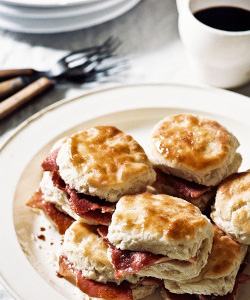
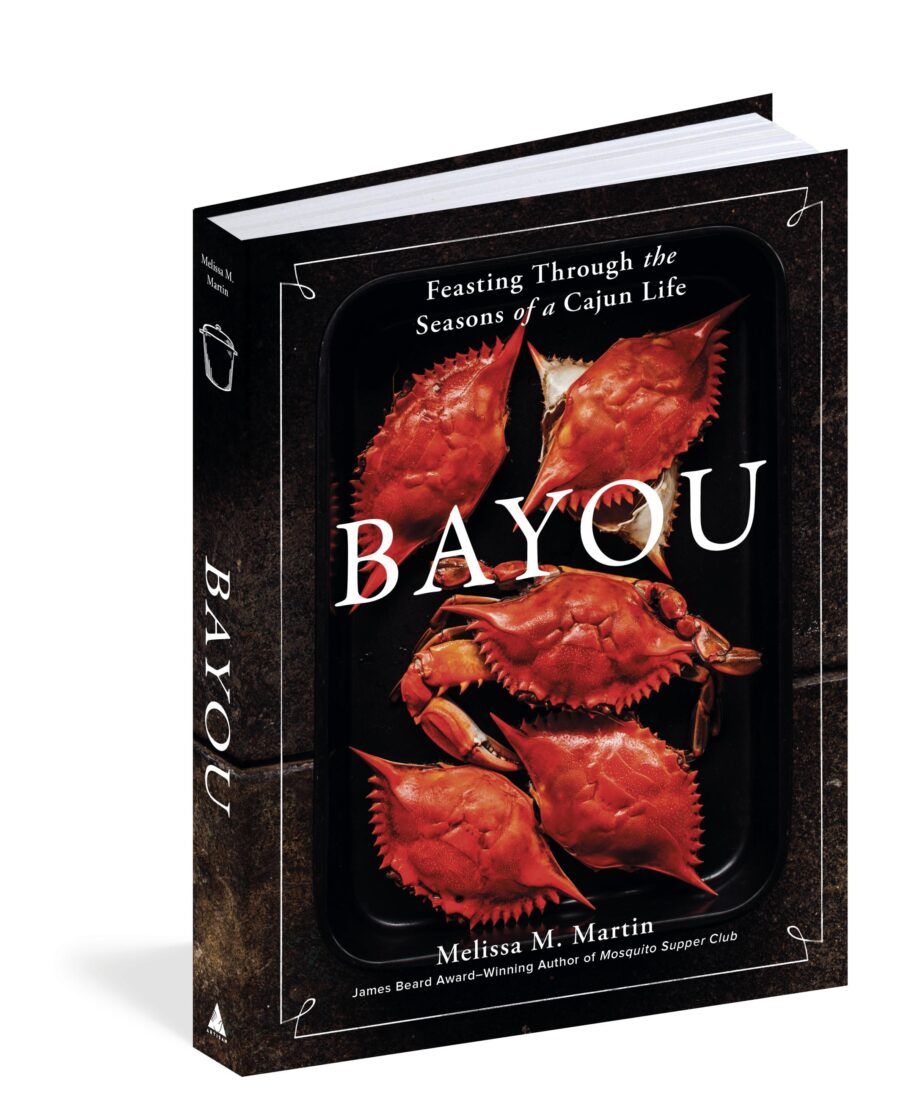
This is your second cookbook after Mosquito Supper Club. Was there anything you wanted to do differently this time?
There were so many things I couldn’t do in the first one because you only have so much space. But in the first book, I introduced people to Cajuns and the seafood industry and what it means to be a fisherman. It was more of a what and a where. In the second book I wanted to let people know who we were. The stories are more ephemeral and way more personal. The first book was structured like a very classic cookbook, and this one is more thematic. It takes you through the emotions and feelings of a year in South Louisiana, sort of sing-song in that way.
You write of the table as a place of communion. Is that still true for most of us?
The original name of the book was Communion, so it’s definitely a thread through the whole book—this idea of a sacred exchange. It was easier in the past for people to gather at tables, and I think we are moving rapidly as a civilization; people are tired and busy and over-committed. I mean, we make people sit for three hours at a table at our restaurant and you can tell how hard it is for so many people. Even for myself, it’s difficult.
There are times I can remember in the last couple of years, of being able to lean into these long eating experiences and feeling your body sort of relax. It doesn’t have to be to get drunk. It can be to sit and enjoy people’s company and slow down. And it doesn’t have to be fancy food. I think me and my sister are making hot dogs tonight. But that act of sharing a meal with people, especially one you’ve prepared, is imperative to the survival of civilization.
In this book, you balance honoring the history of the food you love with adapting to a changing climate.
Already I can’t get the exact shrimp I want to make gumbo with. And I’m a crazy person, I’m like, I want shrimp from this bayou literally from this tree to this tree. I can get a little bit, but now, since my restaurant has gotten bigger, I can’t get the amount of shrimp that I would want. I’m already adjusting to that reality. After Ida we had no crabs and our menu had to change very quickly. It’s going to keep getting harder and harder. And there’s not that many people processing seafood the way we processed it growing up anymore.
Seafood is very prevalent in this book. How did your upbringing in Chauvin, Louisiana, shape your love of seafood?
It was all we knew. My parents never went to a store and bought fish. Everything was from boat to ice chests. If it wasn’t my dad shrimping or fishing, it was somebody you knew. Not only is fish our last wild-caught food, it’s this industry that is kind of standing still in time, and it just has so much heart and beauty to it. Every time I’m on a fishing boat, it’s where I feel most home. I’m a true peasant. I get excited when someone’s like, Let’s pick all these walnuts off this tree and make walnut vinegar and walnut liqueur and walnut stain. And I’m like, This is the best day of my life. I’m still just so drawn to this—it’s an art of living and slowing down that we are losing so quickly.
In this book, you also describe celebrating every holiday, big and small, with food.
We just celebrate everything in South Louisiana. You name it, we’ll celebrate it. One year around Cinco de Mayo, there was a huge sinkhole that opened up in New Orleans, and we all celebrated Sinkhole de Mayo. We’re always looking for a reason to get together and eat together. Growing up in a house of six kids, life was a circus, a celebration all the time. There was so much food and so much chaos, and I like to lean into that. You have to eat, and it just anchors everything.
Let’s talk about these 7UP biscuits.
I am sure that at one time it was on the back of a box of Pioneer baking mix, or maybe it was a collaboration with 7UP, I’m not quite sure, but it’s been in my mom’s recipe box for forever. But I was like, I can’t make it with Pioneer baking mix. I have to figure this out. And so I made this recipe probably thirty times, playing around to try to make it as good as the mix. And to be completely honest, it is probably not as good, because that is an engineered product.
But what’s so fun about this recipe is that when you make it, you’re like, Oh no. This seems all wrong. And it does seem wrong—you’re not cutting butter in the way you would to make biscuits. But it’s super fun and super delicious.
Tell us about the other two recipes we’re sharing, the Turnip Gratin and the Shoestring Onion Rings.
The Turnip Gratin reminds me of a dish that would come from the Acadians. So when the Acadians came over they needed a very warm, filling dish, and I can imagine this is something they would make, and they would bake it in this old crockery and wood-fired ovens. So that’s the feeling I’m going for with it.
We had this place growing up called Danny’s Fried Chicken, and they had shoestring onion rings, and they were delicious. While you were driving back home, you didn’t open the bag of chicken, but you immediately ate the onion rings because you needed to. And I’ve never quite found them like they had them at Danny’s. And so I thought, We’re just gonna make this recipe ourselves.
Rapid fire:
Best Southern state other than Louisiana: I think I have to plead the fifth on this one. I can’t answer!
Three ingredients every Southerner should have on hand: Onions, bell pepper, and celery.
Favorite Mardi Gras krewe: Femme Fatale, but I’m riding in Freret this year.
Saltwater or freshwater: Ooh, that’s hard. Brackish?
What was for lunch today? I had cooked some chicken with caramelized onions and brown rice and sweet potatoes, and that was last night’s meal. So I just came home and I warmed it up. And I poured really old balsamic on my sweet potatoes.



